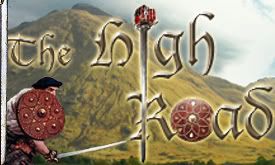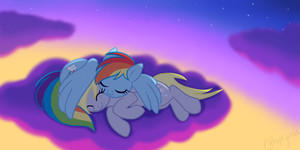There is a great debate about the role of cavalry and charging. This subject was extensively discussed in another forum but I thought that I should get some opinions from people who frequent the SS forums as well.
I thought that these articles I found provided some useful historical information and practical application to the subject by using historical sources, research, and application of the techniques to procure results.
Tell me what you guys think.
Charge of horse vs infantry:
"This is not to say that the effect of a charging horse impacting a foot soldier was inconsequential, or even incidental. I have witnessed first hand the impact of an armored knight and horse, colliding with a standing squire. The unfortunate lad was thrown a good fifteen feet and had the wind knocked out of him, while the show was halted and an ambulance was called to remove him from the field on a back-board. (He was only shaken up.) The Knight probably counted on the footman's fear of just such an impact to act as a kind of "psychological" weapon, to help open the wall. No doubt in combat, trampling an opponent is preferable to being killed, but it still places the horse's most delicate points of anatomy, his legs, at high risk. Without discounting the effect of a horse to ground collision, I say only that this was not the rider's primary intention but rather should be considered as a secondary effect of a shock charge."
On the purpose of the stirrup:
"Stirrups are a logical step in progression to aid in "rising" from the seat, which must be accomplished from the knees without them. ... They are perhaps best employed in assisting the rider to "rise" in his seat and so isolate the movement of his body from that of his horse. Such isolation is most helpful in firing projectile weapons like bows. This is likely the reason why the stirrups originated in the great horse cultures of the east, which are known as excellent mounted archers."
Reason for use of a leather jerkin or chainmail:
"The lance is forced back into the armpit, where it is gripped between the pectoral muscle and inside edge of the biceps and triceps. We learned fairly quickly that to perform a pass wearing only a light shirt or jacket would often result in a tear or abrasion commonly called a Quintain Burn. If the rider's grip was weak, the lance would slide back causing friction burns along the arm and chest. Repeated passes in one rehearsal often resulted in ugly bruises and bleeding. The effect was reduced when practiced in a leather jerkin or chainmail, though that too had its own peculiar tortures."
Impact of charge on rider and horse:
"If the angle of impact was too oblique, the lance would skip off the surface of the shield, and torque back against the rider's face, neck or chest. In order to prevent clothes-lining himself, or hitting his horse with the butt of the lance, we developed a technique called "windmilling". This was achieved by instantly releasing the "armpit grip" and raising the lance above the rider's head. The momentum of the point was allowed to carry the tip counter-clockwise, clearing the horse and rider' heads, and brought to a stop by the strength of the wrist alone. A weak grip could result in the lance simply flying away above and behind the rider. This exact move was also useful when the lance penetrated a shield or target, and the rider needed to release a lance to prevent himself from being unhorsed."
"If the lance does not break, then the rider must continue to "push" through the hit, either penetrating the target, or "unhorsing" it. This was accomplished while simultaneously moving the bridle hand forward even as the body recoiled backwards, and strength was expended to maintain the contact.
One of the biggest misconceptions about shock combat is that the combined weight of horse and rider is directly translated to the lance - As if somehow the horse, rider, and lance were one rigid mass. In fact, they may move down the field as one, but at the moment of impact, they react as separate units.
In reality the rider's body acts as a shock absorber, or buffer, between the lance and horse. It cannot be stressed enough that the rider's own strength and weight are the key to translating the mass of the horse into the force of impact. Although the size of the medieval warhorse gradually increased over time, the effective size of the lance and horse interface (the rider) did not."
In this second article the author describes a possible reason for knights being pictured with lances overhand and underhand
Possible reason Knights are pictured with lance overhand in the Bayeux Tapestry:
"But what to make of his reference that the chieftain "... bore a great long dart, which he cast with much skill." One might be tempted to say that without saddle he could ONLY throw the "great long dart" and would never couch it. But by referencing Froissart's contemporary mention of tilting at posts and breaking "light" lances, I think it is more likely that the Irish utilized a very light lance - something longer than a "spear" or javelin but not as heavy as the lances used by the English. Such a lance could be used over hand, underhand, thrown OR couched - just like the images on the Bayeux tapestry illustrate."
Sections of the Bayeux Tapestry illustrating lances held overhand and underhand
Here are the links to the articles:
http://www.classicalfencing.com/articles/shock.php
http://www.classicalfencing.com/arti...connection.php
Here is the other thread: http://www.twcenter.net/forums/showthread.php?t=463297
After the first page it gets interesting.






 Reply With Quote
Reply With Quote
















